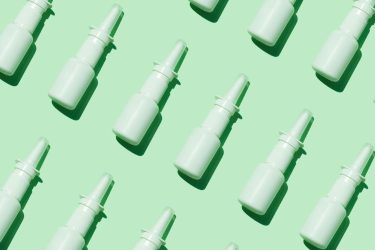
Janssen’s SPRAVATO® (esketamine nasal spray [NS]) helped more participants with treatment-resistant major depressive disorder (TRD) remain remission and relapse free compared with quetiapine extended-release (XR), both in combination with a continuing selective serotonin reuptake inhibitor (SSRI) or serotonin and norepinephrine reuptake inhibitor (SNRI), In a Phase III trial (04338321).
The comparative, randomised, open-label clinical trial evaluated the drug’s short- and long-term efficacy, safety and tolerability. Patients treated with SPRAVATO® achieved greater rates of remission at Week eight: 27.1 percent versus 17.6 percent, respectively; p=0.003) compared to those given quetiapine XR.
The key secondary endpoint of the trial was remaining relapse free at Week 32, after achieving remission at Week eight. Significantly more participants achieved remission at Week eight with no relapse at Week 32 in the SPRAVATO® arm compared to the quetiapine XR arm (21.7 percent versus 14.1 percent, respectively; p=0.008).
Remission rates continued to rise in both arms after the primary endpoint at Week eight with a considerably larger proportion of patients in remission at Week 32 in the SPRAVATO® arm versus the quetiapine XR arm (55 percent versus 37 percent; p<0.001).
ESCAPE-TRD clinical trial assessing SPRAVATO® for treatment-resistant major depressive disorder
The trial evaluated 676 adults with TRD, randomised to receive either SPRAVATO® (n=336) or quetiapine XR (n=340), both in combination with a continuing SSRI/SNRI. TRD was defined as non-response to at least two consecutive adequately dosed treatments (including the ongoing treatment) during the current depressive episode.
The most common (≥10 percent) treatment-emergent adverse events (TEAEs) observed in the SPRAVATO® arm were dizziness (46.7 percent), nausea (29.3 percent), dissociation (28.1 percent), headache (24.6 percent), vertigo (18.9 percent), somnolence (15 percent), dysgeusia (12 percent), paraesthesia (11.1 percent) and vomiting (10.8 percent). These results are consistent with safety data collected in prior studies. In the quetiapine XR arm the most common TEAEs were somnolence (23.2 percent), weight increase (12.5 percent) and headache (12.8 percent). Serious TEAEs were observed in 5.1 percent of participants in the quetiapine XR arm and 5.7 percent in the SPRAVATO® arm. Treatment discontinuation occurred in 23.2 percent of participants in the SPRAVATO® arm compared to 40.3 percent in the quetiapine XR arm. This was mainly due to a lack of treatment efficacy (8.3 percent for SPRAVATO® versus 15 percent for quetiapine XR), adverse events (AEs) were 4.2 percent for SPRAVATO® versus 11.5 percent for quetiapine XR, or participant refusal of further treatment (8.3 percent for SPRAVATO® versus 8.5 percent for quetiapine XR).
“Achieving remission and remaining relapse free are major milestones in the treatment of depression and are especially challenging in TRD, where patients have not responded to previous therapies,” observed Professor Andreas Reif, Principal Investigator for the ESCAPE-TRD trial and Head of Department, Department of Psychiatry, Psychosomatic Medicine and Psychotherapy at University Hospital Frankfurt, Germany.
Professor Reif added: “The ESCAPE-TRD findings provide further evidence for the use of [the] spray in this difficult-to-treat population and offers hope for the millions of people affected by TRD.”
The post Nasal spray could help prevent depression relapse appeared first on European Pharmaceutical Review.